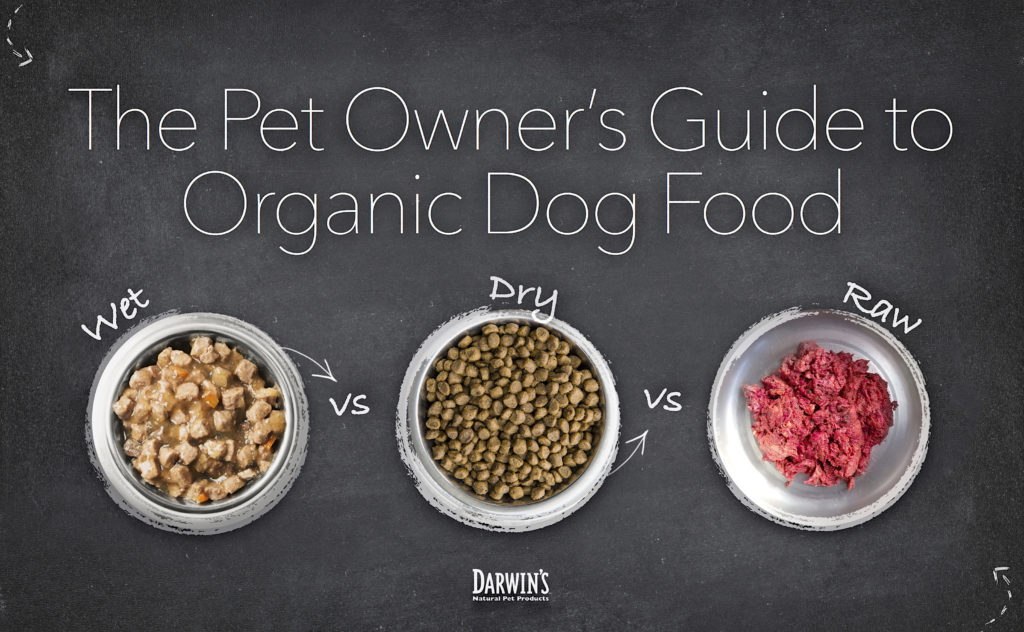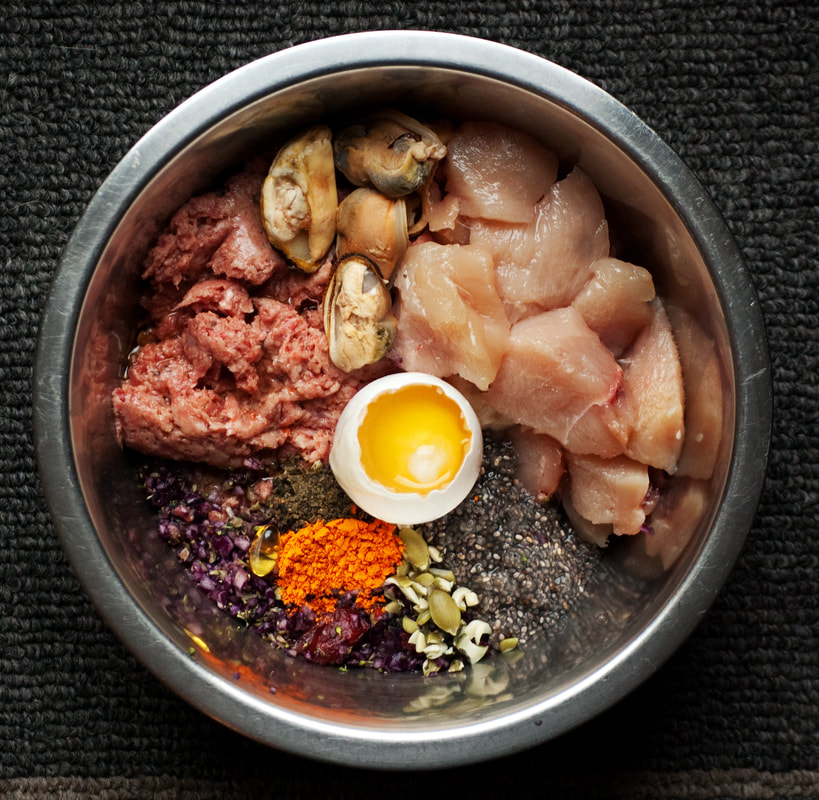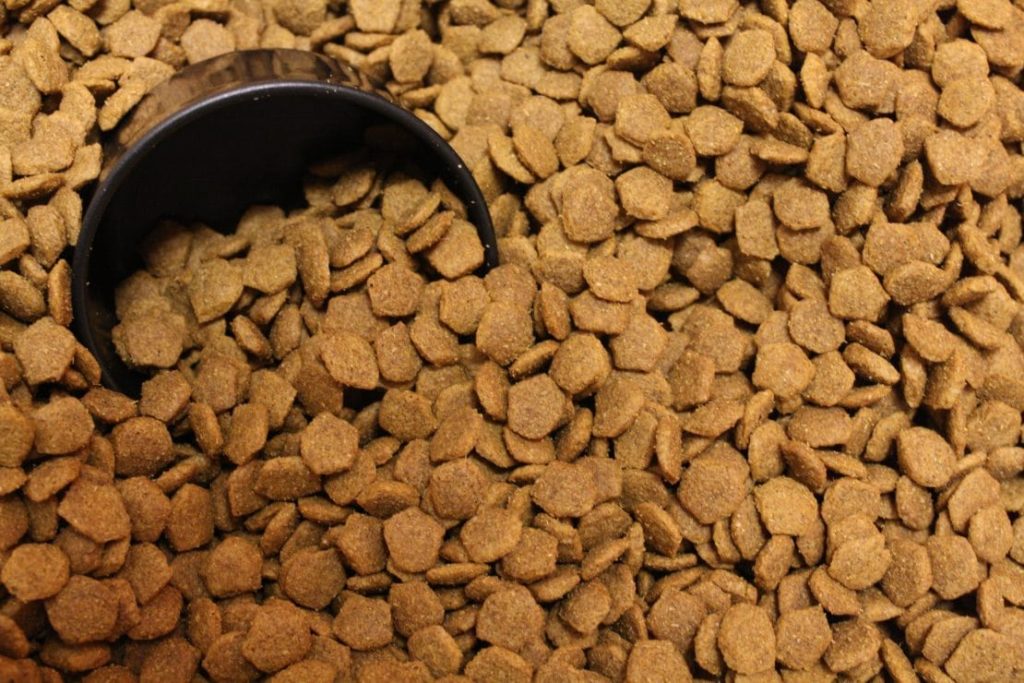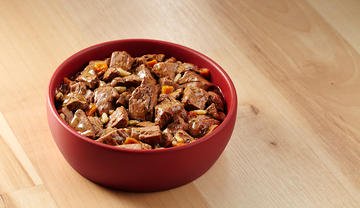WE COVER THE THREE MAIN DIET TYPES FOR DOGS, WITH THE PROS AND CONS OF EACH. WE ALSO DISCUSS OTHER FACTORS IN DETERMINING WHAT YOU FEED YOUR DOG
Working out what to feed your dog is a minefield to navigate and can feel completely overwhelming once you start looking into it. Everyone seems to have an opinion but what we want you to bear in mind when reading this article is that what you choose to feed your dog is a very personal decision and it is really only your business. In the same way that what you feed yourself is your own business and not really anyone else’s. Also, sometimes we also have to adjust what we feed our dogs according to various needs and unexpected factors e.g. a change of financial circumstance or development of an allergy etc. so it is not always a finite decision and it is not wise to pass judgement on others!
Health-wise, ultimately what you put in, you get out…so your dog’s poop is a great indicator of whether their food is suitable for them, and essentially whether your dog’s diet is good. If your dog is passing a lot of stools, and they are unhealthy (loose, very smelly, undigested or yellowy), then you may want to take a look at their food. In an ideal world it should be small amounts that are easy to pass, but not like rocks, otherwise that is uncomfortable for them!
Popular Food Types
The three main diet choices are essentially the format in which the food comes and are as follows:
- Raw diet
- Dry food/kibble
- Wet food

There are also the options to feed in slightly different ways e.g. homemade dehydrated or dry food, home-cooked or wet food that isn’t raw. But below we focus on the most common and popular options which are largely accessible.
Please note, it is not generally recommended that you feed a combination raw & dry/wet food diet simultaneously as they require a difference in stomach acid levels to digest appropriately and therefore can result in discomfort and digestive upset. Transition between the two should be done slowly and carefully.
Raw
Raw feeding is based on the fact that dogs are essentially carnivores and used to eat a raw meat diet before they were fully domesticated and before manufactured dry and wet food was invented. A raw diet is essentially made up of various components in their more natural form – including: various muscle meats (often bone in), bones (whole or ground), offal (organ meats), raw egg, vegetables and fruit, yogurt or similar. Many also add in herbs, minerals and vitamins to supplement the diet and make it more holistic e.g. turmeric.
Pros:
- It is viewed as taking the animal back to its roots and removing the commercial refinements that can potentially cause health issues.
- You can control the ingredients in your dog’s food which means you know exactly what you are feeding them.
- It keeps you in touch with the origins of the food you are feeding your dog which is a good outlook to have regarding any food you or your family eat, including your pets’ diet.
- You can tailor the diet specifically to your dog’s requirements, so it is especially useful for those dogs who have sensitivities or allergies to food ingredients.
- It is generally the least processed option and therefore the most natural (there are still some versions which are processed so keep an eye out).
- It is generally associated with the healthiest poops (the healthiest and least output of the three types, indicating that what you’re putting in is getting used and is not expelled).
- A raw diet removes a lot of unnecessary carbohydrates so can be great for weight loss or maintenance.
- Many can attest to healthier skin, teeth, stools and coats in their dogs after switching from commercial foods to raw food diet.
Cons:
- It can put people off due to the handling/sight of raw meat, bones etc.
- Some places and training organisations do not allow raw feeding (e.g. Pets As Therapy). Whether right or wrong, it is potentially limiting and requires looking into if you are aiming to join an organisation.
- If not handled or stored correctly it can carry risk of bacteria e.g. salmonella. This is a contentious issue as some say this is a big issue, in particular how it is transferred into their faeces whereas proponents of a raw food diet say the risk is no greater than from handling raw food to be cooked for humans, or from general dog poop in the outdoor environment.
- It can take up a lot of space in the freezer/fridge as it needs correct storage to keep the produce healthy.
- There is contentious discussion as to whether bones are a safe component of a raw diet – there is a risk of choking, dental damage or internal lacerations/punctures if incorrectly given.
- It can be difficult to feed a sufficiently balanced, complete raw food diet from scratch so generally pre-prepared frozen natural, raw food products are advised for those inexperienced with a raw food diet and a dog’s dietary needs.
- Fully homemade raw food can be time consuming to prepare, but some pre-prepared versions can end up having additives or components which your dog may be sensitive to.

There is a lot of debate surrounding raw food diets with people as strongly against it as the advocates are for it. The key debate seems to surround health and safety (e.g. regarding bacteria, storage and the dog’s output). However most agree that the important factor is making sure your dog’s food is complete and balanced. Ultimately though, it is a matter of choice and whatever you go with, having knowledge is the essential part. As you will see with all of these options there is still a discrepancy in quality between brands and types, within the three main formats of food.
The Tails: Buckley is fed a raw diet and is healthy and happy on it. Handler Phoenix Giraffa is knowledgeable about raw feeding and is an advocate of it, without judging those who don’t feed raw.
Dry Kibble
This is essentially ground up ingredients formed into shapes – whether that be cubes, bone shapes, spheres etc. – and then baked dry. It gets a bad wrap as it has the potential to be cheap, processed rubbish for dogs. But in the same way that all foods can evolve, there are now some very high quality versions.
Pros:
- This type is generally widely available from a variety of source, with a great deal of choice.
- It is incredibly convenient, as it doesn’t require refrigeration or preparation so it is time-efficient and has a long shelf-life.
- It is ideal for dogs that free feed (have their bowl down all day and eat as and when they like rather than set mealtimes) as it doesn’t perish like the other options do.
- It also generally travels well and is great for doubling up as training treats or the contents for enrichment puzzles and games.
- People can also add additional foods to it without issue e.g. vegetables, liquid supplements, gravy etc.
- Many types produce their own gravy when covered with warm water and left to stand before serving.
- Kibble is great for using in slow-feeder bowls for dogs who tend to inhale their food and it is generally not messy.
- It is also fairly easy to portion out as there is generally guidance on the packet according to age and weight and you can weigh the kibble or measure it in cups and be pretty consistent.
- Adjusting portions for weight loss and gain is fairly easy with kibble as you can easily add a little less or more where it can be more complex with cans of wet food for example.
Cons:
- Some brands of dry food are terrible quality, in order to stay cheap – they are easily filled with cereals and dubious quality of meat, as well as unspecific meat ingredients (e.g. “animal digest”).
- There is the propensity for large amounts of preservatives and chemicals, especially to extend shelf-life (which is the big selling point of dry food).
- Sometimes there are brightly coloured kibble brands which (in the same way as brightly coloured dog treats) are usually full of chemicals and artificial colourants which risk upsetting your dog’s stomach or even provoking allergies.
- Large bags of dog food can end up going almost stale when left open for too long – a problem you don’t get with the other types due to the smaller packaging sizes.
- Some brands fill their product with grains (rather than meat etc.) which can aggravate sensitivities common in dogs, as well as not being nourishing for them.
- Dry dog food is not highly regulated unfortunately and some brands have frequent product recalls due to cross-contamination so it is worth looking into different brands and finding a more reliable one.
- Remember well-known doesn’t always equal reliable or healthy. Especially as a lot of the best quality dry dog foods are newer and smaller businesses, so are not as well-known.

All in all, there is a significant range of quality within dry dog food so it is essential to read and understand labels – identify the ingredients in your dog food and apply the same principle that you might to determining a quality human food: if you don’t know what many of the ingredients in the food are, then maybe it isn’t a good choice. Also note the order of the ingredients – you’re looking for a named meat to be at the start (i.e. the main ingredient) and for it not to be full of cereals.
The Tails: Sparrow actually eats dry dog food – she eats Millie’s Wolfheart, which has different mixes recommended according to activity level, breed type and age. She does really well on it, having struggled previously on other foods we have tried due to having a very sensitive stomach. She does get a bit dehydrated as she isn’t very good at getting a drink, so handler Dory Adelie often pours water on it or adds in some chopped up vegetables to boost her fluid intake. Eli eats a senior formula of dry food.
Wet
This is generally from a can, pouch or pot and is ‘moist’ meat chunks with a gravy or jelly of some form around it, and often little chunks of vegetables as well. Sometimes it is more pate in style (almost pureed), depending on the brand, and the proteins vary in the same way as with dry food.
Pros:
- It isn’t associated with the same dehydration issue as dry kibble is, due to having a higher water content (unsurprisingly given the name).
- Generally doesn’t cause bloating and discomfort in the same way that dry food can for some dogs (particularly large barrel chested dogs), as it doesn’t expand in their stomach.
- It is often a good option for picky eaters, senior dogs and those who have lost their sense of smell or appetite
- Due to the pate style texture of some brands, it can be a good option for dogs who have problems with their teeth or have difficulties with chewing or digesting food or those who are unwell or old.
- It is fresher tasting and smelling for dogs so they generally get more excited over it.
- It can also easily be mixed with other foods and generally there is less issue when switching between the different formulae of wet food from the same brand, than there is when switching between the dry formulae of the same brand.
Cons:
- This type of food perishes very quickly once opened and it has to be stored in the fridge – so it requires thinking about how to store it without having meat dog food stinking out the rest of your refrigerator!
- Lids for cans do exist, and alternatives like foil and cling film/wrap can work, however it can be annoying and inconvenient to store.
- Portioning isn’t easy if you don’t feed exact half or full cans, so it is harder to judge and adjust according to your dog’s specific needs, and avoid waste.
- There is still a massive discrepancy of quality – some brands are high quality whereas others are highly processed and lack nutrients – it involves a lot of label reading again!
- It isn’t very travel friendly as cans are heavy and difficult to store without the contents perishing when you are on the go.
- The lining of cans generally contains BPA and BPS which are linked to reproductive system issues and even cancer. Smaller cans generally don’t so consider those instead – check the label to be sure.

Dry and wet food can actually be fed together and can be great option for many dogs – with one brand and formula of kibble to keep things consistent, and then different formulae of canned food to supplement and balance their diet with added water intake and often different proteins. It can make an otherwise dull and lacklustre diet more interesting and more nourishing for your pup. You might notice they perk up even more when it comes to meal times!
The Tails: Po is fed a combination diet of dry and wet food. He is naturally very lean under all that floof and as he is fairly high energy and still growing, for him to have enough fuel and bulk out sufficiently muscle wise he requires a fair amount of food. The combination of wet and dry food keeps it interesting and reduces the likelihood of dehydration for an active pup like him.
Other Factors
Breed specific diets: Larger breeds often require a slightly adjusted diet (both at puppy stage and adult) – due to the higher risk of developmental orthopaedic diseases like hip & elbow dysplasia. So large breed puppy foods generally have lower fat, calcium and phosphorus content to slow down any excessively rapid growth (associated with increased risk of the diseases above). Smaller dogs can generally move on from puppy to adult food earlier than larger dogs as they reach their full size more quickly. They are also potentially more prone to being overweight as many owners over-feed their small, toy or miniature breeds. Make sure to take into account your dog’s weight and size when working out portioning of any type of food.
Puppy food: Puppies generally require a different diet to fully grown adults as they need extra protein, calcium and fat to make sure that they grow and develop healthily. They also generally need a higher caloric density intake than adults, to account for the amount of energy going on growing, while still fuelling their activity. Puppies should be fed on puppy food until around 80% of their expected adult size, with large/giant breeds eating puppy food until at least 12-16 months old to ensure they aren’t at risk for nutritional deficiencies.

Lifetime changes: It is important to consider all aspects of your dog’s health when choosing what to feed them, and that this may shift during their lifetime. For example, senior dogs often need a different food that is generally lower in fat, and also to eat a smaller portion, as their reduced activity level is often associated with weight gain and related issues. Our resident senior dog, Eli, eats senior formula of dry food. Pregnant or lactating females may need additional fat and nutrients, while working dogs may need a higher calorie intake due to the high energy expenditure. If your dog is unwell or has particular sensitivities they may need an adapted diet as well. If you are not sure, consult your vet.
Nutritional requirements: Regardless of what form of food you choose to feed your dog, it is essential that your dog’s nutritional requirements are met. Make sure it is age, size and breed appropriate, and adjust portion sizing according to the results in your dog (some dogs gain weight more easily than others, so you may need to reduce their portion size compared to the recommend amount). For your dog’s health, making sure they eat a complete, balanced diet is important, however don’t base this on a human’s balanced diet as we have very different nutritional needs to a canine.
Quality: Make sure to read the packet of anything you feed your dog – whether it is dry food, wet food, prepared raw food, treats or human foods. Regardless of what form you feed them, quality is the important part. Make sure you recognise the ingredients and can identify them, and aim to pick brands that have a particular meat as the first listed ingredient. Sometimes you may need to feed your dog a cheaper option for a while – if this is what you need to do, that’s fine, just make sure you have an idea of the ingredients you are feeding them, as there is still a range of quality within a budget price range. Do your research, compare products (see below) and monitor your dog’s health.
Health: The best way to judge how your dog is reacting to a food is to evaluate their stools, but you can also see their general health through their skin, coat, teeth, eyes etc. Remember to transition slowly between any foods to give your dog’s stomach a chance to adjust, and give it time for them to get used to it before judging whether it works for them or not.
All About Dog Food is a fantastic comparison website for dog food choices – evaluating them on a number of different factors including quality rating, ingredients, price and suitability for a given diet. It is a great resource for determining and comparing a couple of options that fit your price range.
**information sources**
Feeding My Dog Breed
Raw Dog Food: Benefits and Risks
Pros & Cons of Raw Food Diets
Canned Dog Food Benefits
PetMD: Dry vs Wet Food
PetMD: Adult vs Puppy Food

